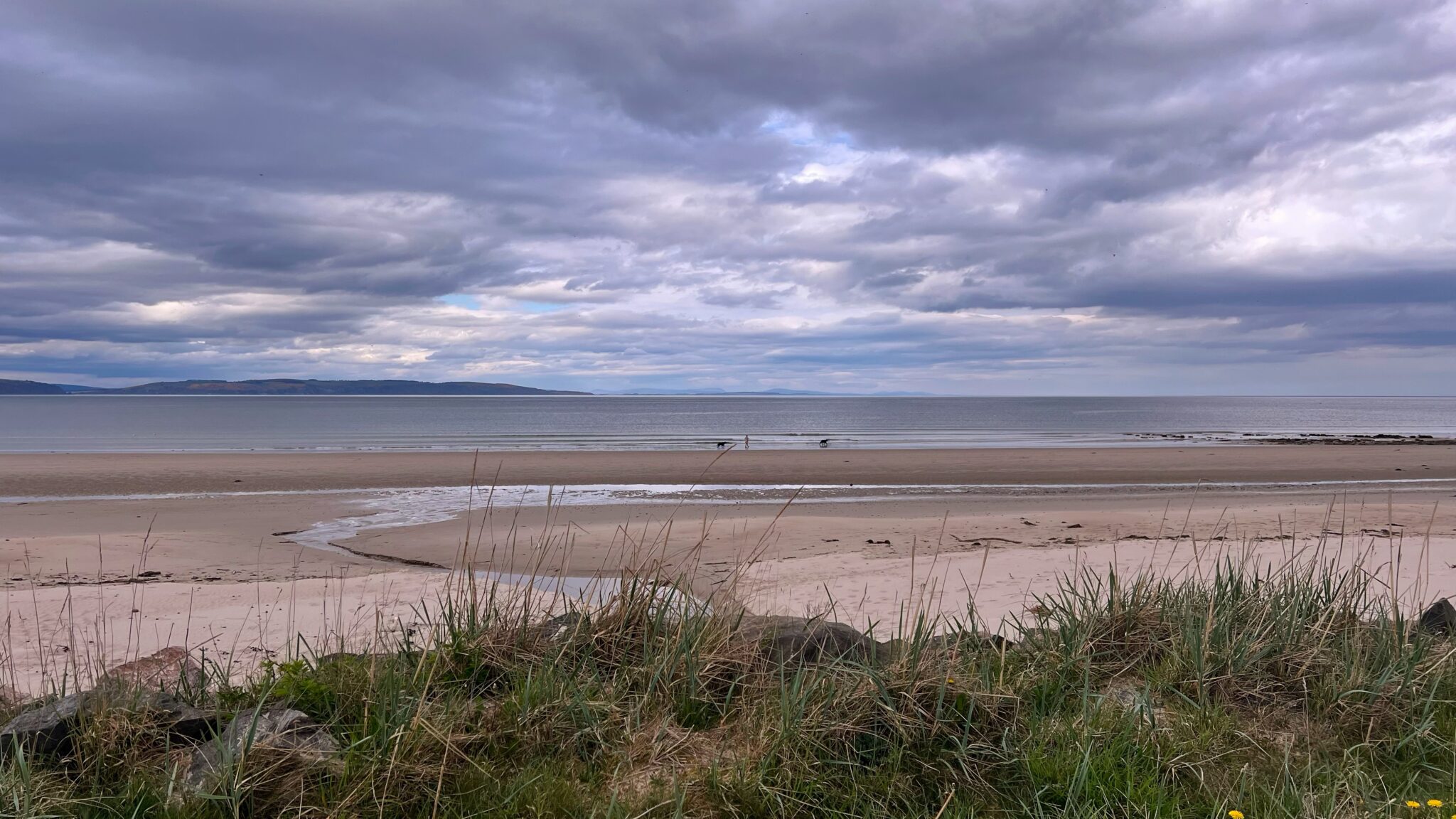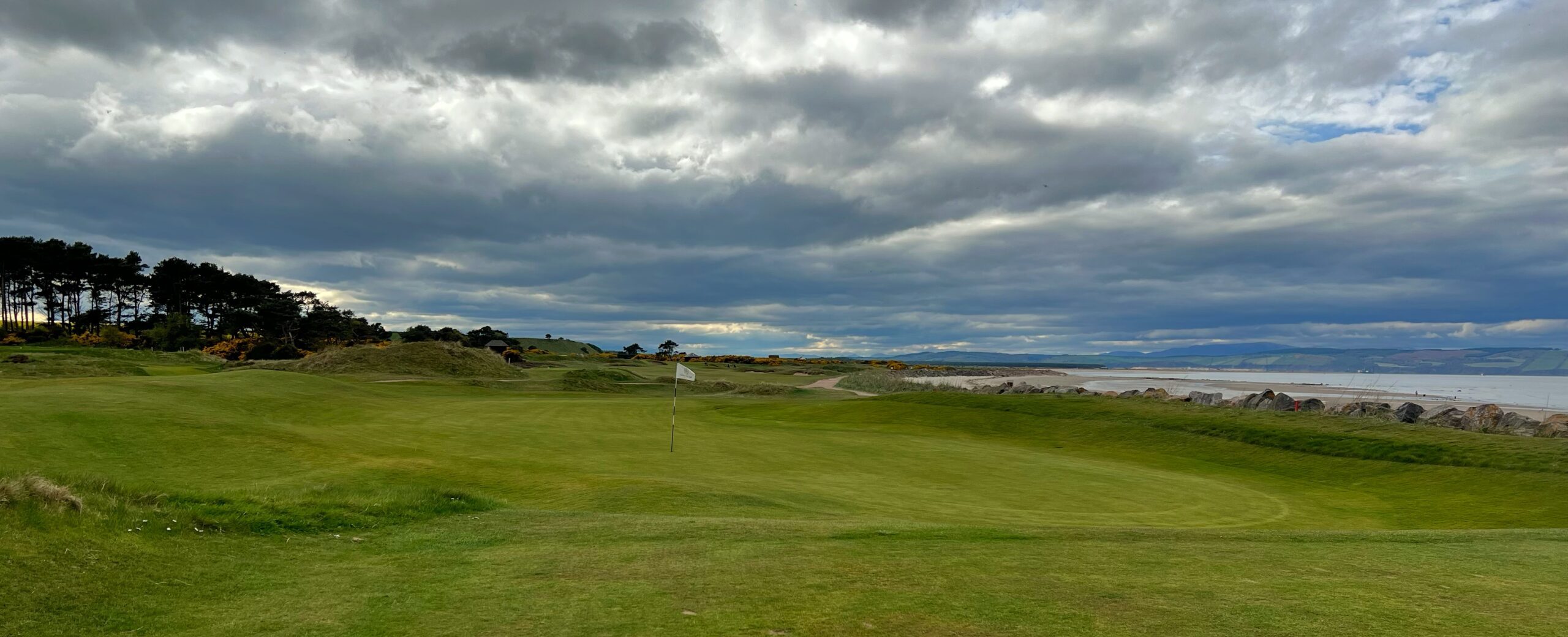A postcard from Nairn and Fortrose & Rosemarkie Golf Clubs
The final rounds, the final memories of this wonderful trip.
INVERNESS, Scotland – Alas, this is my last postcard from Scotland. We have not run out of courses to play but out of time to play them on this trip.
As my youngest son David said long ago, as a first-grader, when his Babe Ruth baseball team won the playoffs and the championships: “I don’t want it to be over.”
Our final rounds were played Saturday and Sunday, at Nairn Golf Club and Fortrose & Rosemarkie Golf Club, both just 20 minutes drive from our hotel in Inverness.
They were our sixth and seventh rounds in seven days, all walking over wonderful links courses. And I suppose I could add up all our scores and pars and birdies (yes, there were actually a few between us) and maybe I will eventually, but why?
Reminds me of a line from the great Peter, Paul & Mary song, “Rightfield:”
“I don’t know the inning, I’ve forgotten the score. …”
Our Saturday round at Nairn Golf Club, played in the late afternoon under overcast skies, finished in twilight, the lighting beautiful. The club dates to 1887, when Arthur Simpson laid out the course. Old Tom Morris added his touch, and a further revision was made by James Braid in the late 1930s.
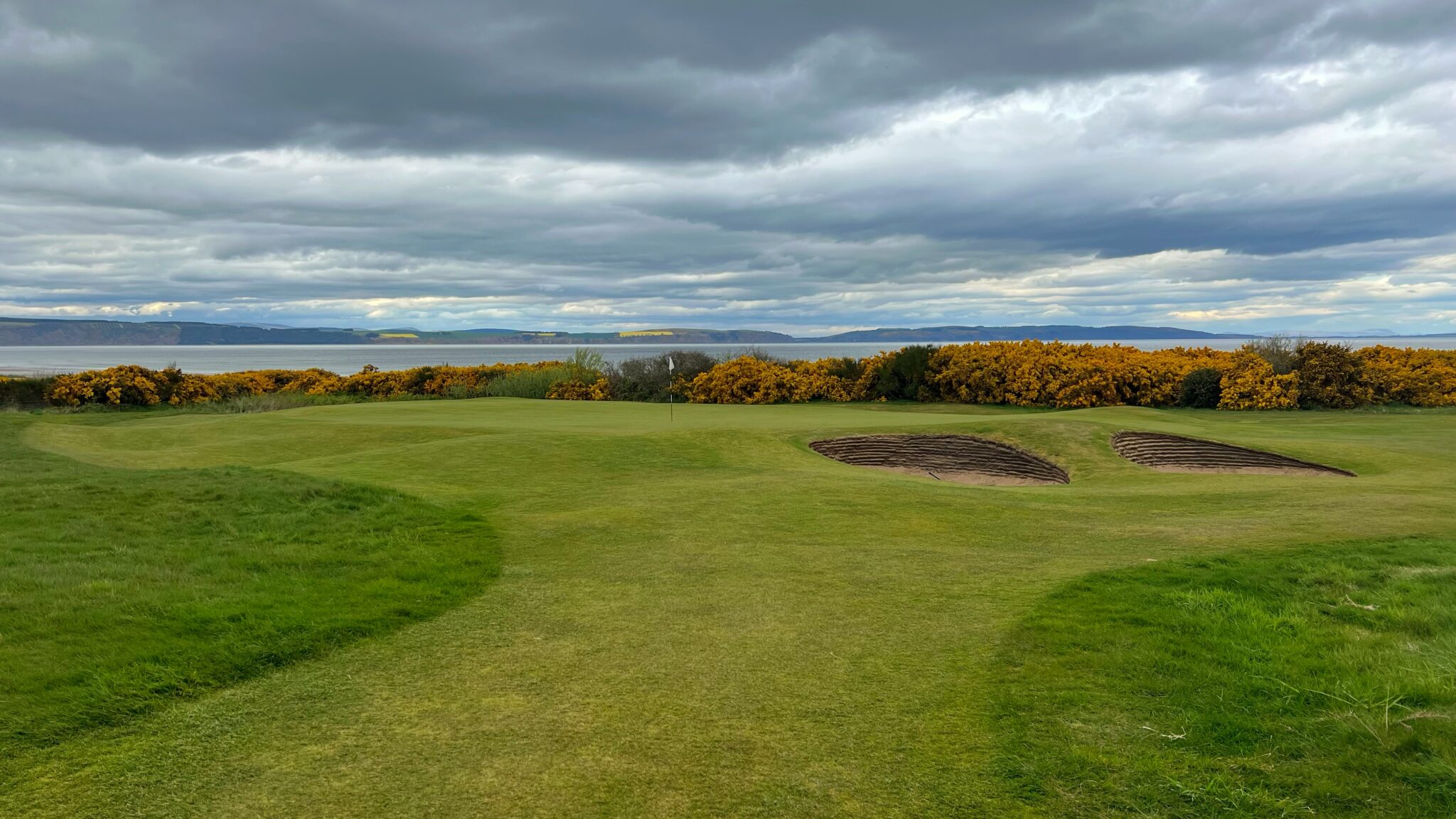
On the Moray Firth, Nairn is “routed over bouncy, rippling, hummocky ground smack beside the West Beach,” as the late James W. Finegan wrote.
“In truth, few courses skirt the sea more closely or more persistently, at least on the outward half, than Nairn. It is entirely possible to slice onto the beach, which is not out of bounds, six times on the first seven holes.”
In fact, I did slice on to the beach, with my 3-wood on my second shot on the par 5 No. 7 hole. In theory, I could have played my ball from there if I could have seen it, but I couldn’t (and not that it would have been wise for this 75-year-old with a replaced knee and reconstructed ankle to climb down over the rocks to get there).
I took my penalty stroke, dropped on the line and hit a better 3-wood that, as shots are wont to do on the fast, firm fairways, bounced happily and hoppily along toward the green and went on to a bogey.
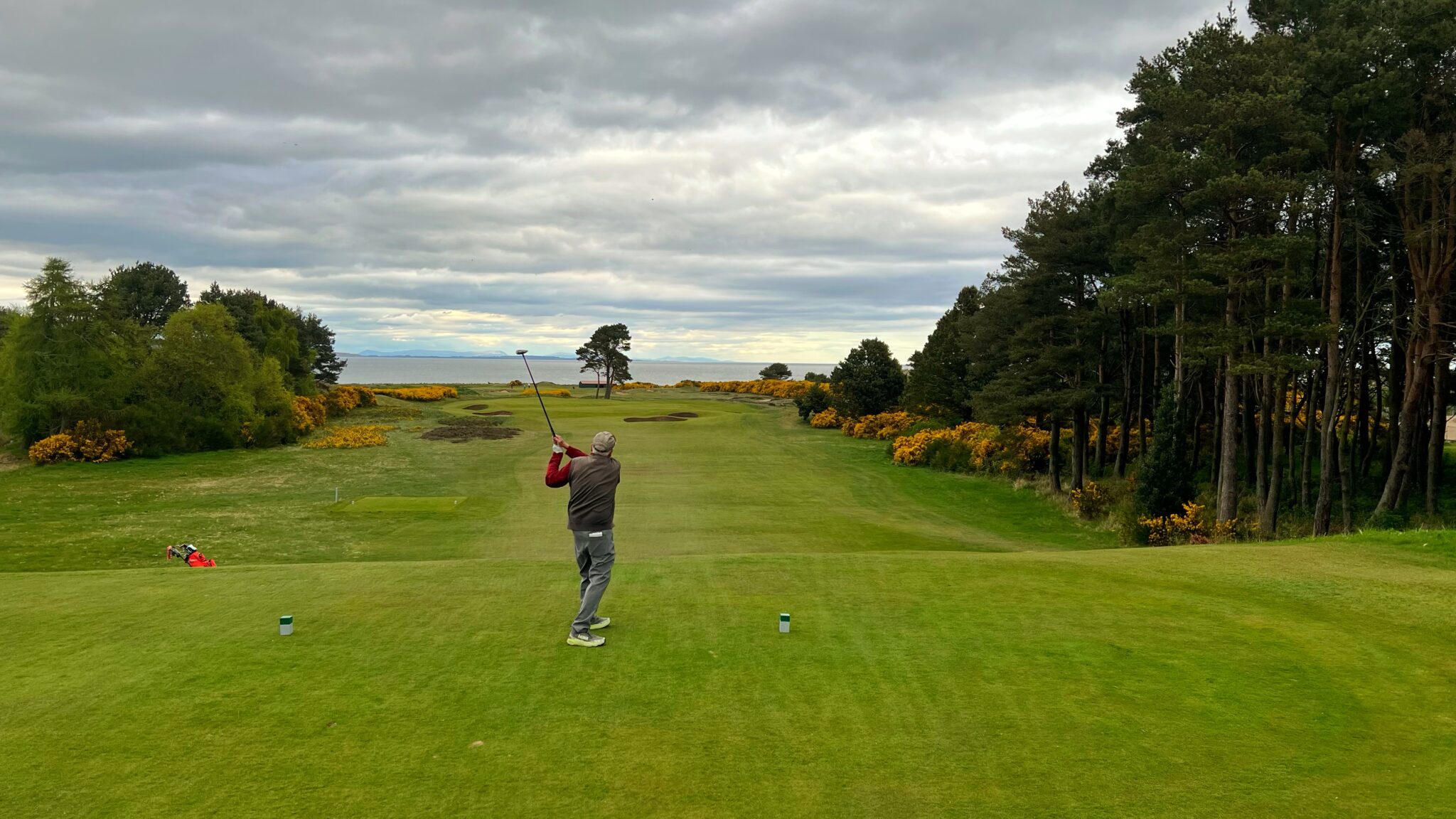
With narrow fairways hemmed by heather and gorse, Nairn is considered be subtly tough. Wrote Finegan: “This is traditional duneland golf, with as much of the game played along the ground as in the air. The demands on our creativity and our patience are unceasing.”
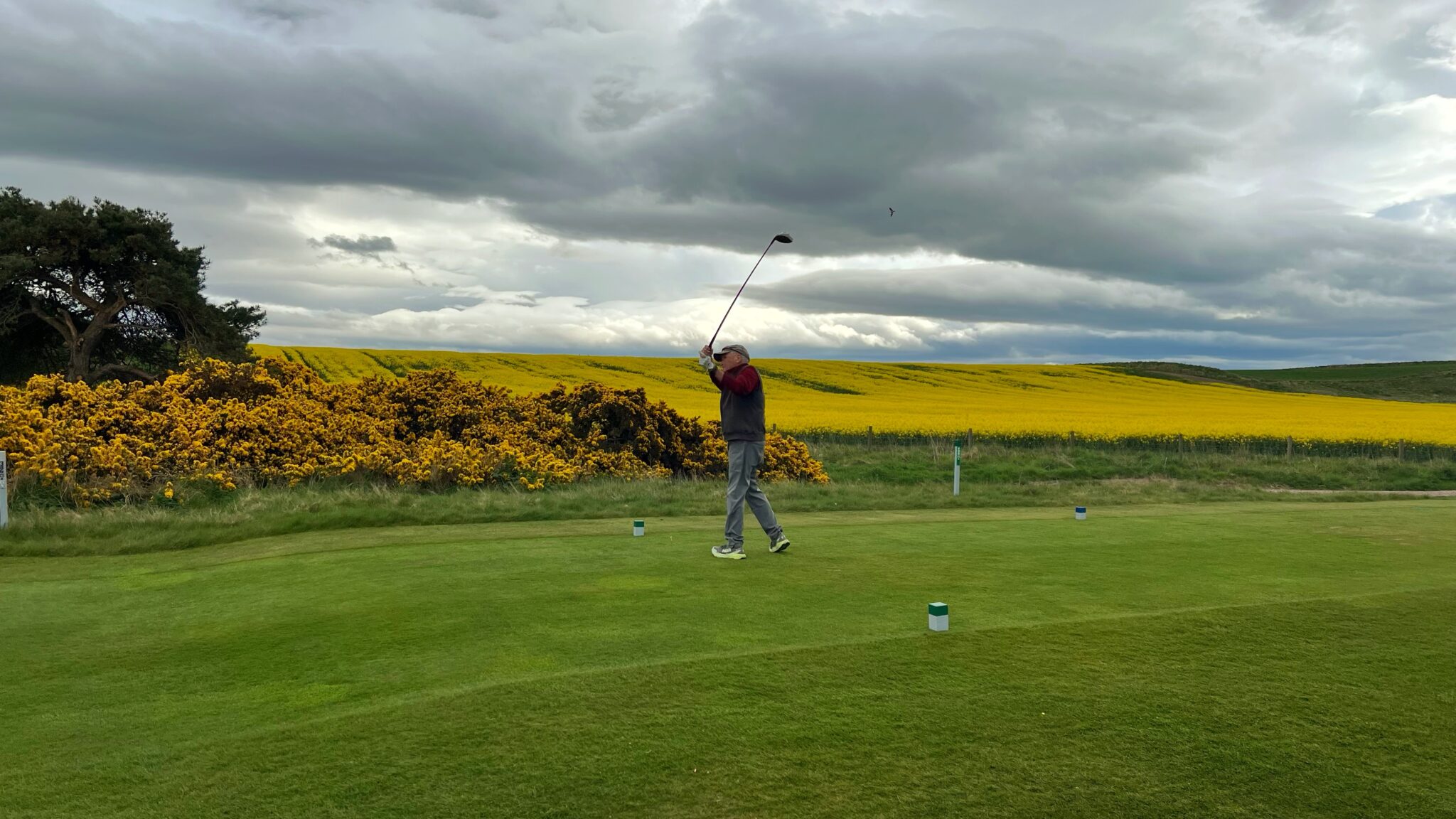
What a wonderful course and experience. Another course I could dream of playing again. Saturday, playing with a brother-and-sister from Indiana, I shot 45-47-92 from the green tees (5,629 yards, par 71) while Jason shot 48-43-91 from the blue tees (6,067 yards). Greens fee was 300 British pounds (about $400) and again, thank you, Jason.
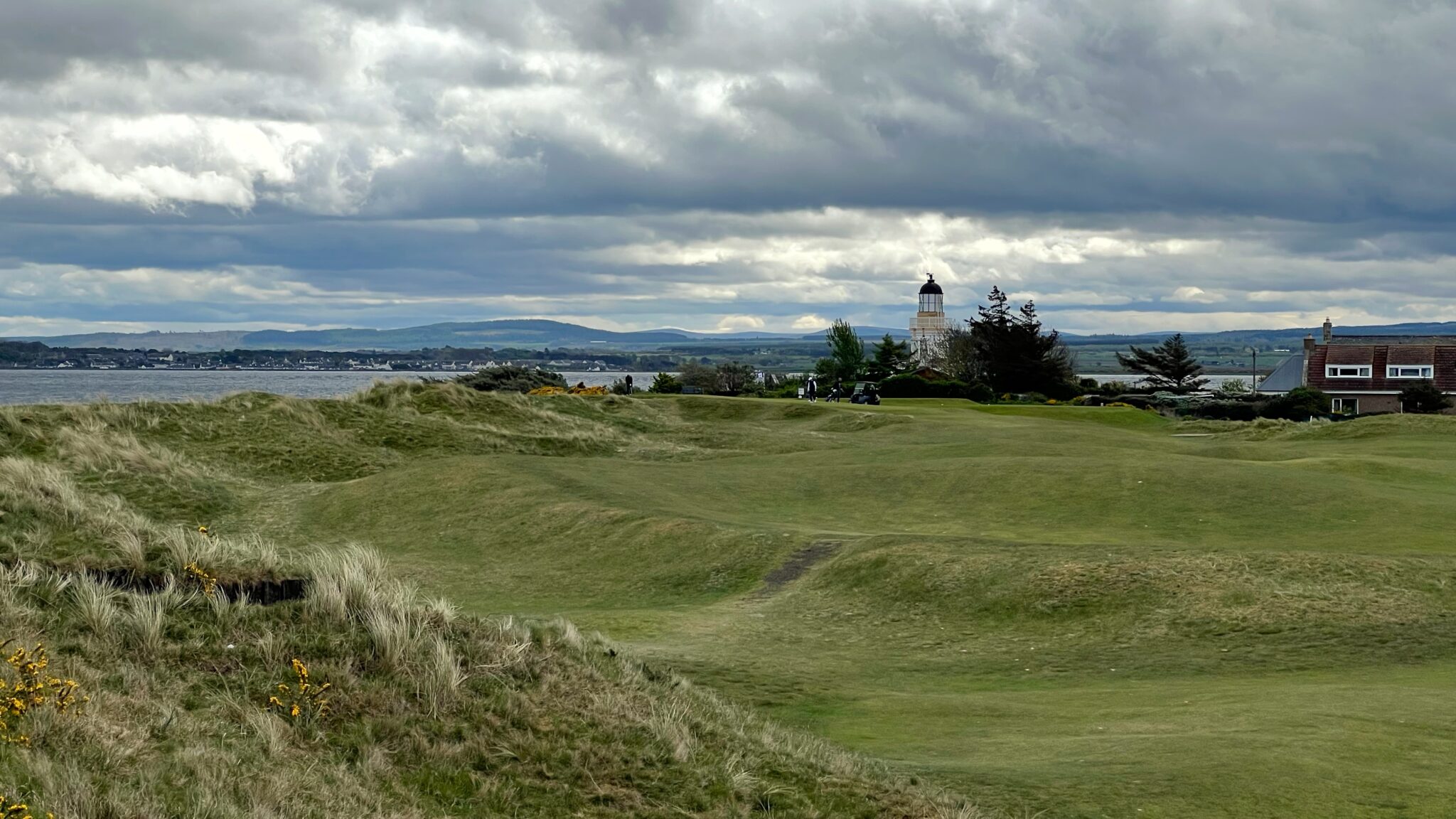
Our Sunday morning round was played on the opposite side of the Moray Firth, the estuary leading to the vast expanse of the North Sea on the horizon. Fortrose & Rosemarkie occupies a narrow peninsula jutting into the firth. In the U.S., it might be the site for luxury homes, but this is Scotland, so golf.
The peninsula itself is said to be only 500 yards wide, at least at the narrowest, and from some holes you can see the firth on either side. It is not overly long – just one par 5 – and the par 4s are shortish by yardage, but there’s gorse and bunkers and even a road to deal with and in the wind – and there was that Sunday – you will have difficulty getting your “numbers,” as Finegan would have put it.
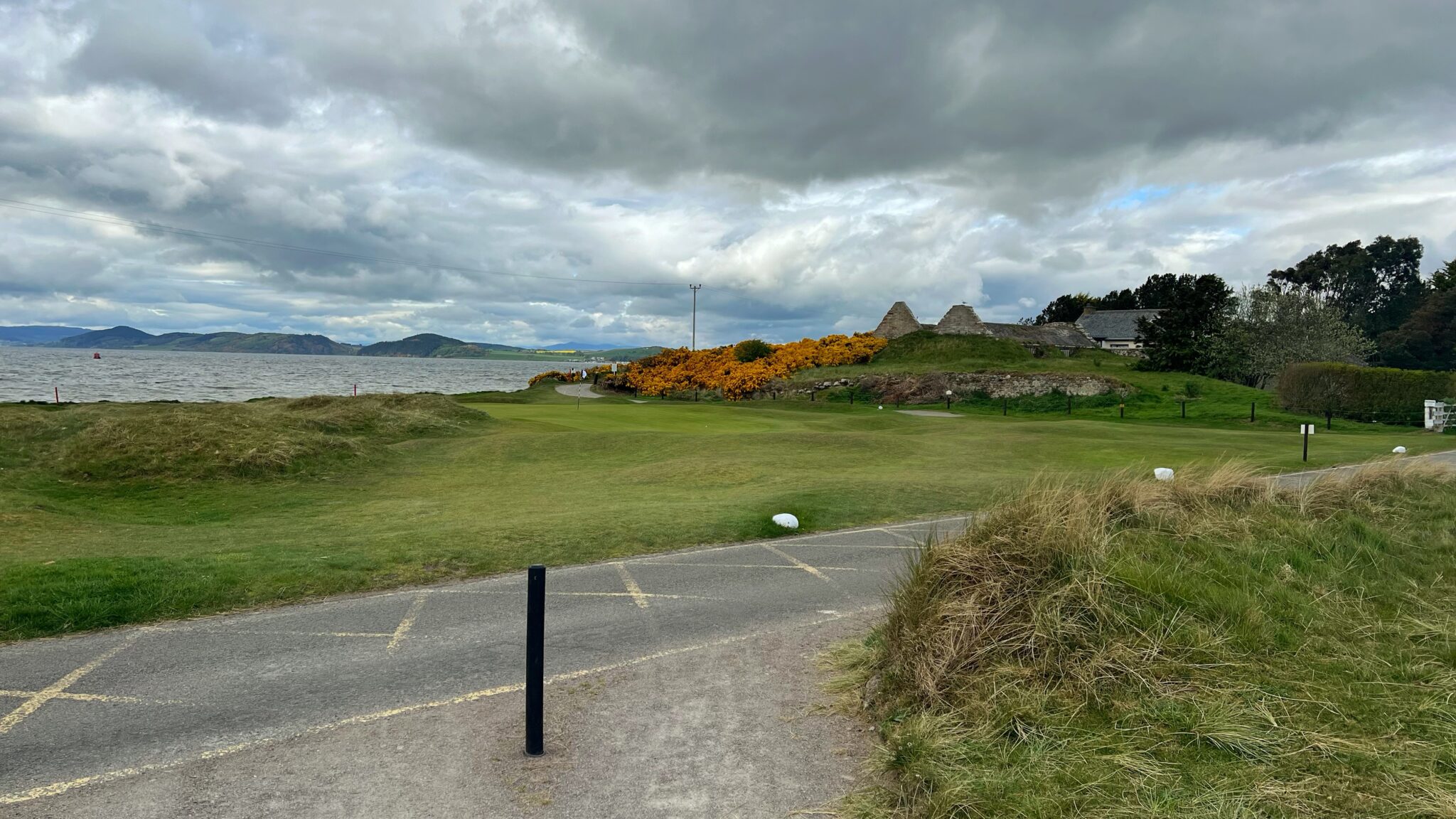
Golf has been played here since 1702 and a golfing society was founded in 1793. The club was formed in 1888, making it the 15th oldest golf club in the world, and the course played today was designed by Braid in 1932.
On yet another lucky day without rain – we had none since a hint of it at North Berwick – we fell in love with the place. As at Nairn, there’s a practice range, and typical of Scotland there’s a club house with lockers, and a dining room/bar with a view of the course and here the best lunch of the trip.
It was also the easiest walk of the trip, and this time, rather than get a pushcart, I carried my clubs, perhaps to remind myself of younger days, not sure, but was fun.
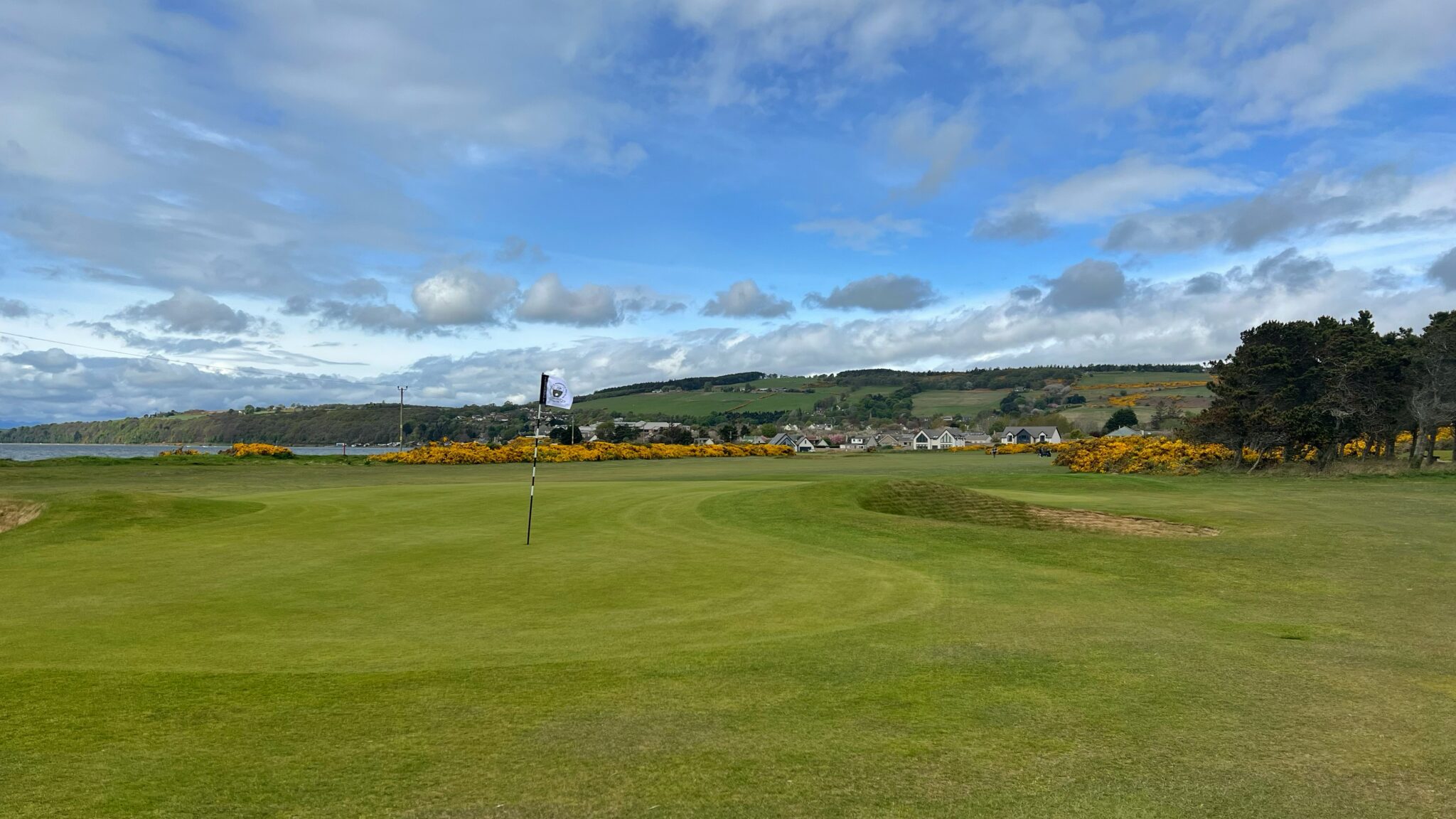
From the yellow tees (5,594 yards, par 70) I got off to a slow start with tentative swings induced by fear-of-gorse and shot 47-43-90. From the white tees (5,894 yards, par 71) Jason shot 44-39-83, his fourth round in seven days in the 80s, his handicap pending at 12.7.
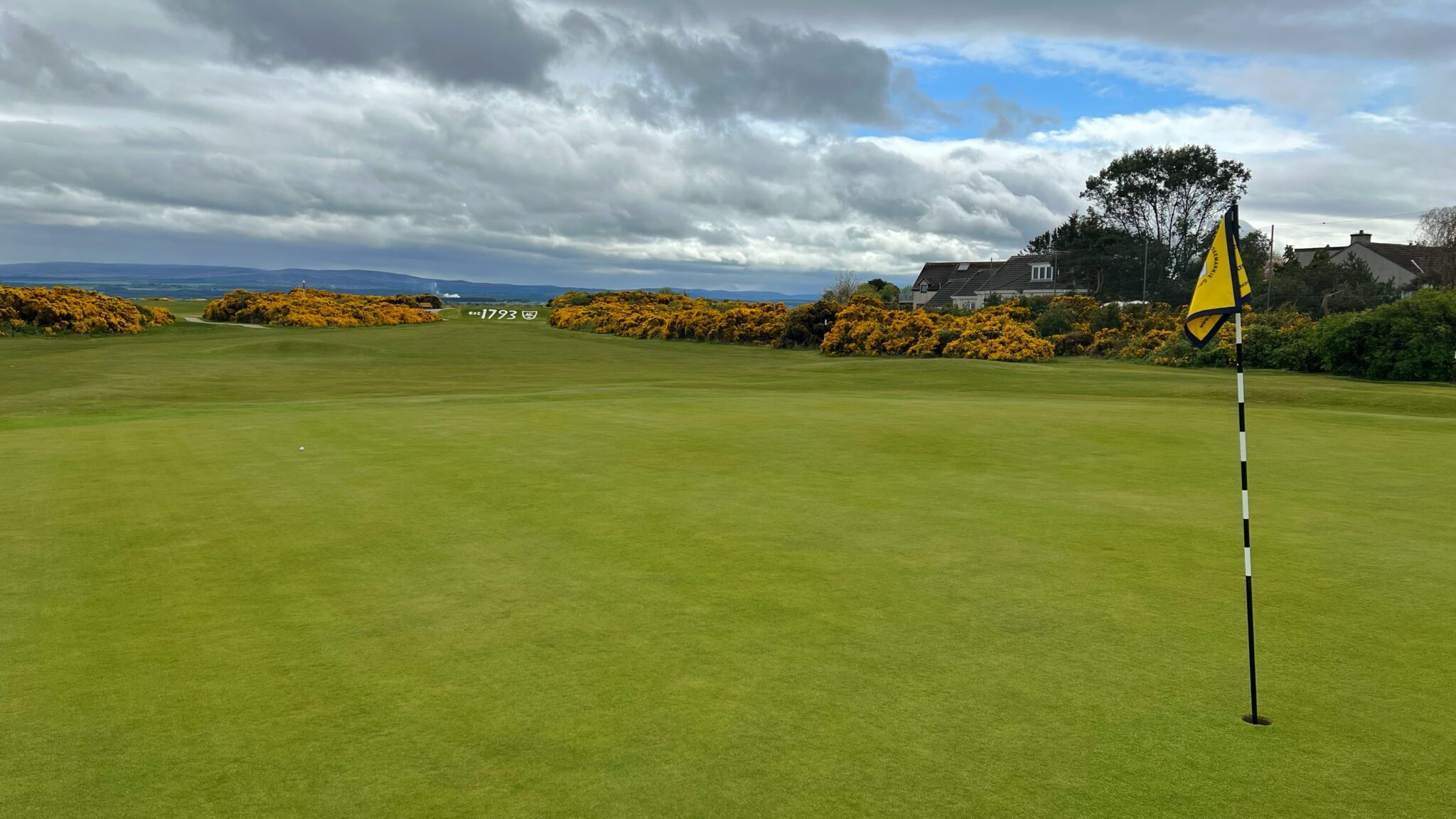
At 115 pounds (about $150) this was a true links experience and definitely a glad-we-played-it course.
Finally, a word about links golf. It’s challenging yet wonderful. The firm fairways can carry shots farther, bouncing and rolling, and sometimes they reach a green you didn’t think you could reach and yes, sometimes they find a pot bunker along the way, and depending on the wind, often you realize that less club is better, not more, and that rolling a 7-iron from 30 yards is better than hitting a 60-degree wedge.
Which brings me to one last story about my good friend, the late Blaine Newnham, with whom I golfed on writing trips to Ireland, North Wales and Scotland. Blaine was a good golfer who loved links golf and was adept at controlling his distances and staying out of trouble, and so it wasn’t unusual for him to hit a shot that wound up just short of a pot bunker, for example, or that landed just safely beyond the trouble, by feet if not inches.
However, one day in Scotland this knack took on an almost mystical, magical quality, and our photographer Rob Perry dubbed such a shot “a Blainer.”
To score well in Scotland, you need a Blainer here and there, and one of my favorite pars on this trip came at Lundin Links, where my good drive barely cleared a burn, and my second shot to the green stopped just short of a bunker. A chip and a putt and a par 4 with a double Blainer.
Thought of Blaine a lot here. Great trip, great memories, and now we fly to Jason’s home in Maryland on Monday, and I return to Eugene on Tuesday, forever grateful.
Thank you Scotland, and farewell.
